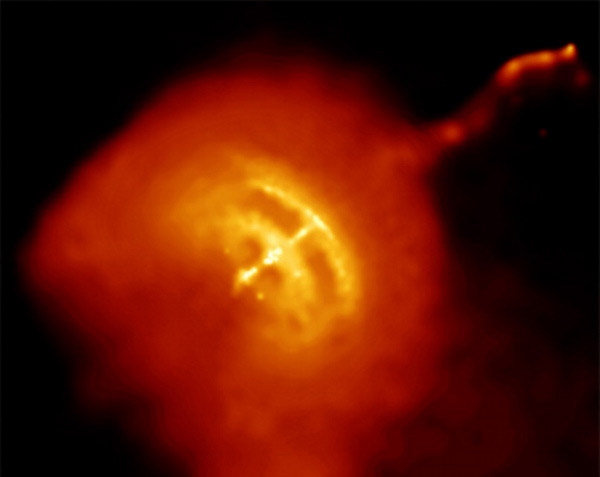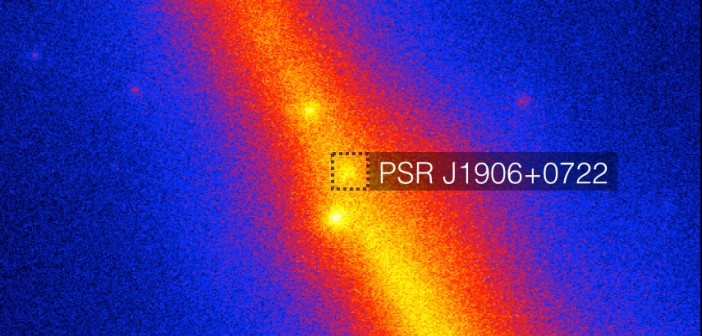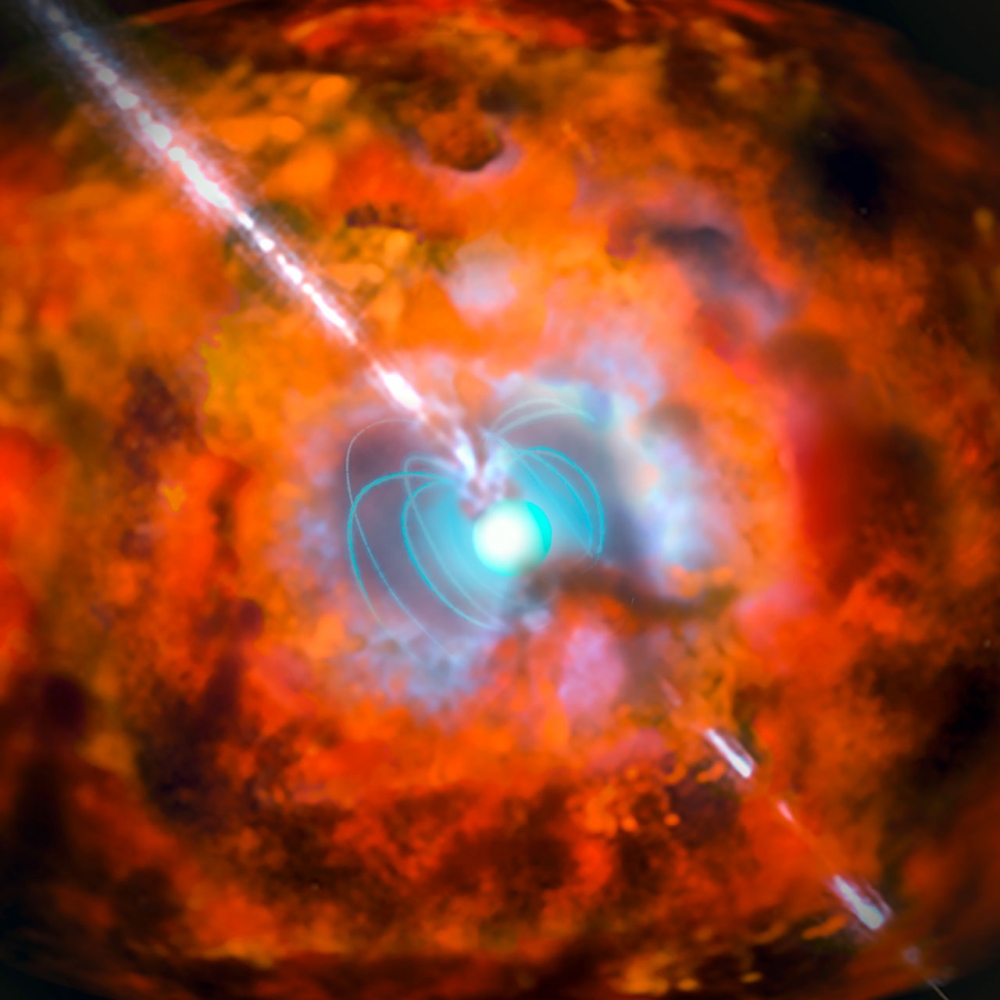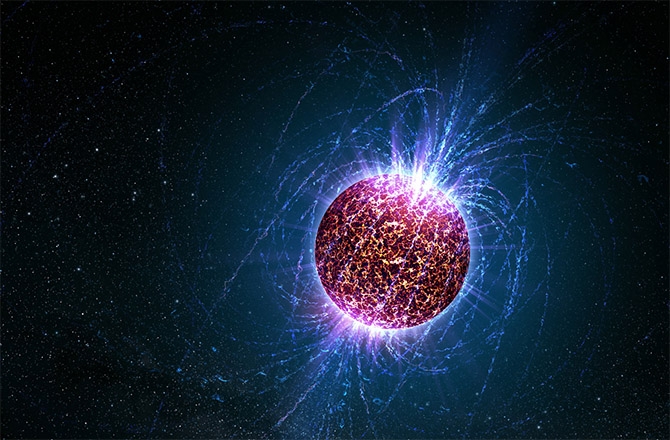Pulsars speed up by tapping into superfluid core

An image of the Vela pulsar (which lies at the heart of the Vela supernova remnant) in which glitching has been observed. The pulsar itself is the bright white spot at the centre of the hot gas, and a jet powered by its rotational pole is also observed in this Chandra X-ray Observatory image. (Courtesy: NASA/CXC/PSU/G Pavlov et al.)
Pulsars are known to be the most precise cosmic timekeepers, but occasional "glitches" or a sudden increase in their spin rate disrupts the stars' otherwise regular behaviour. A new study of the glitching process by an international team of researchers suggests that superfluid matter in the core of a pulsar may cause the poorly understood effect. The work combines radio and X-ray data to determine pulsar masses, and successfully explains glitches that are documented in 45 years' worth of observational data.
See full text



_0_o.jpg)